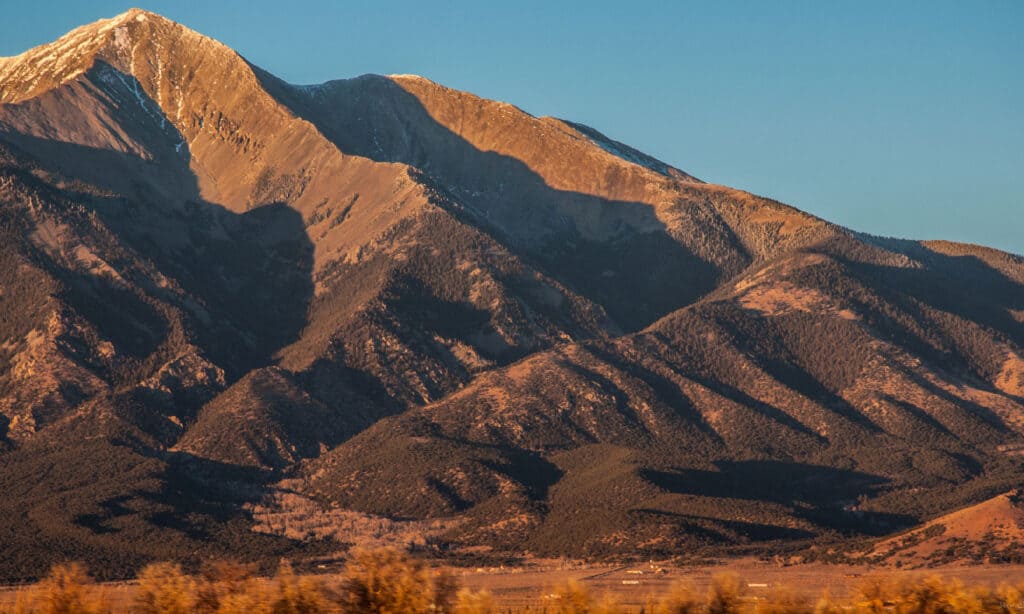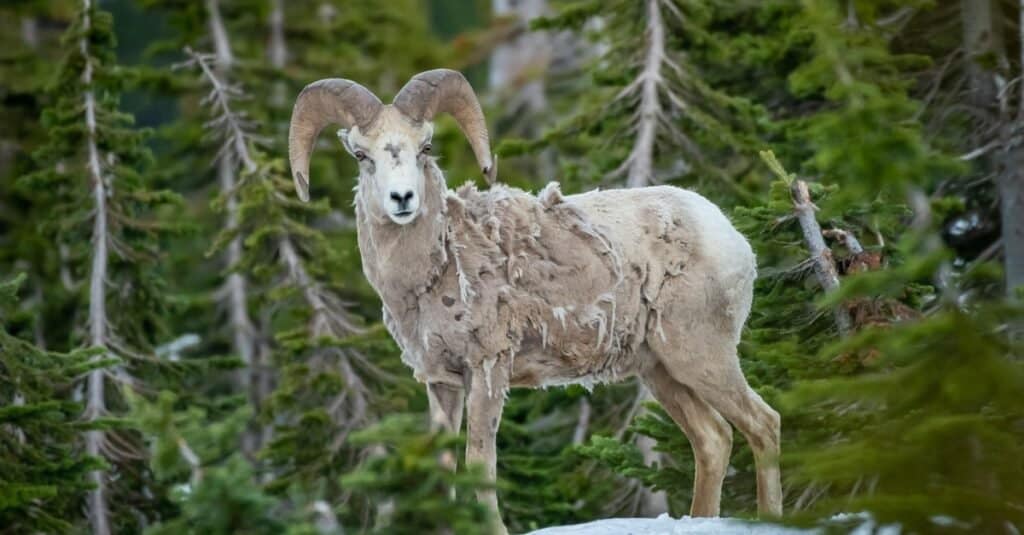The Rocky Mountains, known to us as the “Rockies,” are a massive mountain range in North America. The name of the mountains is closely linked to Algonquian and is a translation of an Amerindian name. The Rockies consist of more than a hundred mountain ranges subdivided into the Middle Rockies, the Canadian Rockies, the Southern Rockies, and the Northern Rockies. These mountain systems have some of the most stunning topography and several alpine lakes. Let’s find out about this spectacular range’s actual length and some incredible facts.
What is the actual length of the Rocky Mountains?

The Rocky Mountains extend for approximately 3,000 miles.
©Paul Brady Photography/Shutterstock.com
The Rocky Mountains extend for approximately 3,000 miles (4,800 km) in a straight line from western Canada to the southwestern parts of the US state of New Mexico. The Rockies are over 300 miles wide in places. The Middle Rockies spread in Utah, Wyoming, and the southeast of Idaho, while the Southern Rockies are located in Colorado and New Mexico.
Lastly, the Canadian and Northern Rockies are in Idaho and Montana. The northern terminus is located south of the Liard River and east of the Trench. The southern terminus is near the Albuquerque area, adjacent to the Rio Grande Basin.
How tall are the Rocky Mountains?
The four subdivisions share the same physical attributes of high elevation, with many peaks exceeding 13,000 feet (4,000 meters). Mount Elbert is the range’s highest peak and is located in Colorado at 14,440 feet (4,401 meters) above sea level. Mount Robinson is the highest peak in the Canadian Rockies. It’s located in British Columbia at an elevation of 12,972 feet (3,954 meters).
Of the 100 highest significant peaks in the Rockies, 78 are in Colorado, 10 in Wyoming, six in New Mexico, three in Montana, and one each in Idaho, British Columbia, and Utah.
How old are the Rocky Mountains?

The Rocky Mountains formed 50 to 80 million years ago during a geological period known as the Laramide orogeny.
©iStock.com/RoschetzkyIstockPhoto
The Rocky Mountains formed 50 to 80 million years ago during a geological period known as the Laramide orogeny. Erosion by glaciers and further tectonic activity continued to sculpt the Rockies into dramatic peaks and valleys. Several plates slid underneath the North American plate, resulting in a broad belt of ranges that run across western North America.
Humans began inhabiting the Rocky Mountains at the end of the last ice age. First Nations and Native American peoples still residing in the northern ranges of the Rockies in modern times include the Salish of Montana, the Nez Perce and Coeur d’Alene of Idaho, and the Kutenai and Shuswap of British Columbia. Many Europeans, including Sir Alexander Mackenzie, explored the mountain ranges for natural resources such as minerals. The Rockies have never experienced dense populations.
What are the features of the Rocky Mountains?
The breath-taking view of the Rockies brings in droves of tourists every year. The Rockies are home to the famous Rocky Mountain National Park, located about 75 miles north of Denver. The park is considered part of the Front Range of the Colorado Rocky Mountains.
With elevations ranging from 7,000 to 14,440 feet, these mountain ranges make you feel like you are exploiting the unique terrain. Snowpack provides significant annual runoff for major river basins, like the Rio Grande, Arkansas, Platte, Missouri, Colorado, and Columbia.
The Rocky Mountains also feature forested regions, valleys, tundra regions, and canyons. There is also an extensive museum collection that preserves specimens and artifacts that tell a story about this beautiful range.
What kind of animals live within the Rocky Mountains?

Bighorn sheep can be found around the Rocky Mountains.
©iStock.com/kellyvandellen
The Rocky Mountains provide habitat to numerous well-known wildlife species, such as cougars, coyotes, bears, lynx, badgers, bighorn sheep, marmots, pikas, mountain goats, pronghorn, wolves, and wolverines, among others.
Members of the deer family are relatively common in the Rockies and include the woodland caribou, white-tailed deer, moose, mule deer, and the North American elk. North America’s largest herds of moose are found in the foothills forests of Alberta and British Columbia.
Some species have declined in the mountain ranges, including the white-tailed ptarmigan, white sturgeon, trumpeter swan, western toads, and greenback cutthroat trout. Apex predators like wolf packs and grizzly bears have been extirpated in the United States from their original ranges, though they have partially recovered due to conservation measures.
8 incredible facts about the Rocky Mountains
The Rocky Mountains are an excellent place for real outdoor adventure in the United States for those who want to explore the path less traveled. Here are eight amazing facts that tell you everything you need to know about one of North America’s most spectacular landscapes.
- Sir Alexander MacKenzie, a British explorer, became the first European to cross the Rockies in 1793. On July 20, 1793, he arrived at the Pacific coast of what is now Canada and completed the first recorded transcontinental crossing.
- The Lewis and Clark Expedition (1804-1806), also known as the Corps of Discovery Expedition, was the first scientific survey of the Rocky Mountains.
- The Rockies are home to a supervolcano called the Yellowstone Caldera, situated in Yellowstone National Park. This is why you can see geysers in Yellowstone, and it’s also one of the underlying reasons for the potent smell of phosphor throughout the park.
- More than 250,000 acres of land in the Rocky Mountains are a vast wilderness. All this wilderness is located in Colorado and managed by the National Park Service.
- The Athabasca Glacier, part of the Canadian Rockies, is the most-visited glacier in North America. The glacier runs approximately 100 to 1000 feet deep and is about 4 miles long. It is a slightly strenuous hike but worth it.
- The Rockies contain the highest dunes in North America. Some of the dunes are over 750 feet high! The Great Sand Dunes National Park allows you to explore the dunes.
- Kootenay National Park, set in the south-eastern British Columbia mountain ranges, is the only Canadian park with cactus plants and glaciers.
- The Rocky Mountains form a prominent part of the “Continental Divide of the Americas,” a chain of mountains that divide the Americas.
The photo featured at the top of this post is © iStock.com/chapin31
Thank you for reading! Have some feedback for us? Contact the AZ Animals editorial team.






